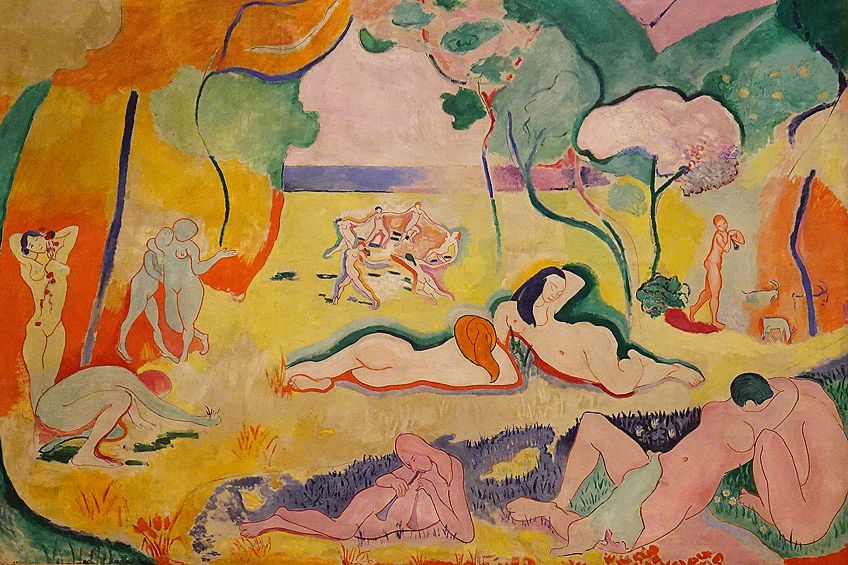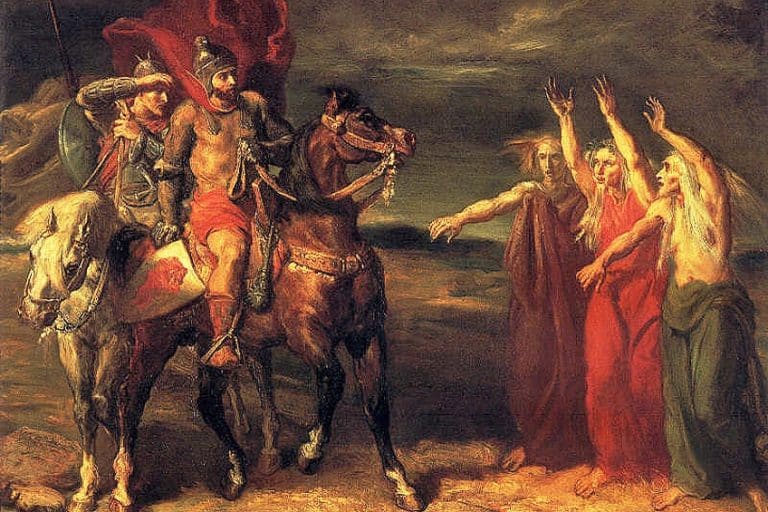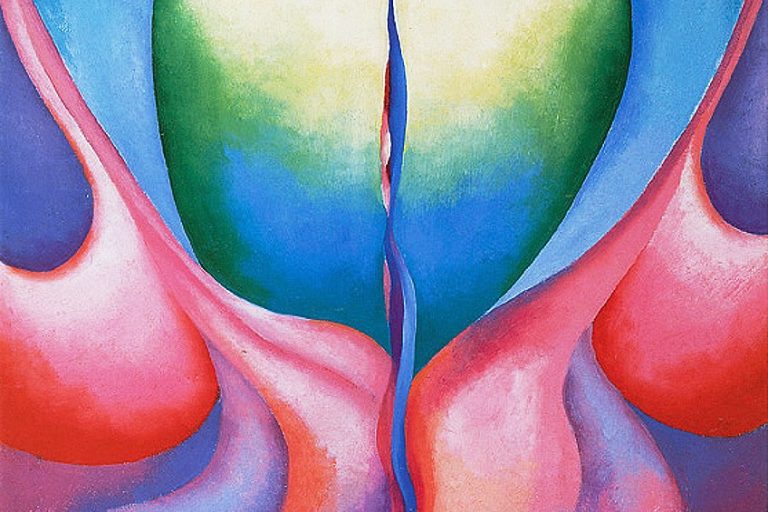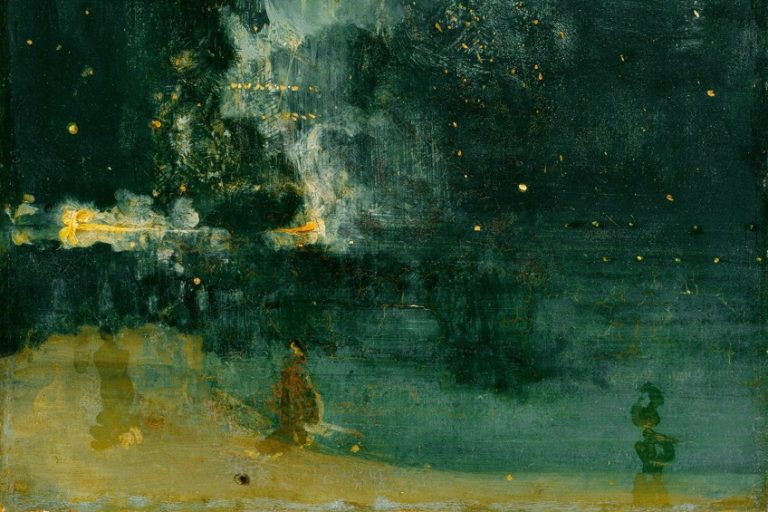Fauvism – The Origins, Artworks, and Artists of the Fauve Movement
The turn of the 20th century saw the birth of Fauvism art. What is Fauvism? This modern art movement found inspiration in the intense color, emotional vulnerability, and depictions of light in the works of Paul Cezanne, Vincent van Gogh, Georges Seurat, and Paul Gauguin, among others. A loosely related group of French painters, including Albert Marquet, Georges Rouault, and Henri Matisse, pioneered the Fauvist movement. The Fauvist movement stood as a source of inspiration for other early 20th-century modern art movements, like Expressionism and Cubism.
Table of Contents
- 1 A Summary of Fauvism’s Key Contributions to 20th-Century Art
- 2 The Development of Fauvism
- 3 The Most Influential Fauves and Their Works
- 4 The End of Fauvism
- 5 Frequently Asked Questions
A Summary of Fauvism’s Key Contributions to 20th-Century Art
As the first modern art movement of the 20th century, the Fauve movement laid the groundwork for many of the most well-known modern art movements, including Cubism and Expressionism. There are three primary aspects of Fauvist artwork that were notable departures from 19th century traditions and that set the stage for the modern art movements to follow.
These key Fauvist contributions include the use of color, the interest in the artist’s subjective experience, and the unique nature of the subject matter and style.
Fauvism and Color
Perhaps the largest contribution by Fauvist artists to modern art was in their use of color. Throughout the 19th century, color had been used predominantly in a representational capacity that hinged on the reality of the natural world. Fauvist artists were revolutionary in their use of color by allowing a color to simply exist on the canvas in its own capacity.
While color still played an important role in establishing the structure and mood of a piece, particularly as the Fauvists emphasized individual expression, the use of color no longer needed to be tied to the natural world.

Color as a means of personal expression was a primary preoccupation for all Fauvist artists. The combinations and arrangements of color were the foundation of Fauvist rhythm, form, and subject. For Fauvist artists, color offered them a window into the true expression of subjective perception that was separated entirely from the original physical form. A face, like Matisse’s Green Stripe – Madame Matisse (1905), could be any combination of potentially clashing colors.
A tree could be purple and the sky could be green – it was perception and intuition that underlay Fauvists’ use of color, not faithfulness to reality.
Fauvism and Individual Subjectivity
Color was part of the Fauvist’s primary concern with the expression of individual subjectivity. Works of Fauvism were often emotionally charged, depicting accurately the direct experience of the artist. For Fauvist painters, their intuition, relationship to their subject, and their emotional response to the world around them permeated each brushstroke.
For many artists in the Fauvist movement, the emotional content of a painting far outweighed any theoretical or academic subject matter in importance. Every element in a Fauvist painting existed for the singular task of communicating the subjective experience.
Fauvism Subject and Style
The third major contribution that the Fauve movement made to the development of 20th-century modern art lay in their ability to balance a composition. Works of Fauvism have a strong and unified compositional appearance, which Fauvists achieved through their use of saturated colors and simplified forms.
These two techniques amplified the inherent two-dimensionality of the paper or canvas, which in turn emphasized the significance of each individual compositional component.
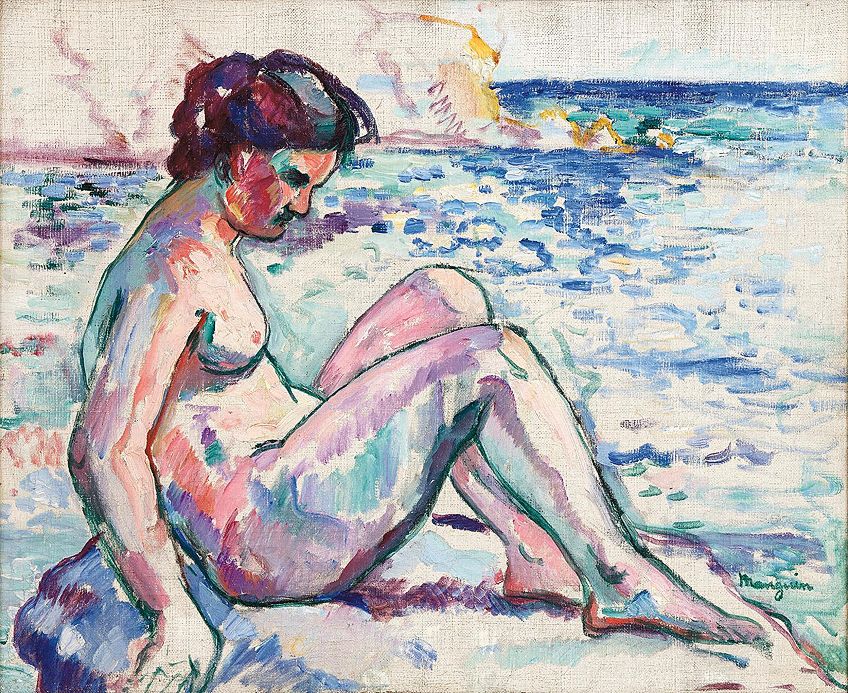
Possibly as a result of their preoccupation with form and color, Fauvist artists seemed less concerned with the novelty of their subjects. In contrast to the Impressionists, who chose to depict the modern metropolis through their paintings of Parisian concert halls, cafes, and boulevards, Fauvist painters returned to traditional and simple subject matters.
Many Fauvist painters chose to focus on the world around them, including figures in interiors, landscapes, portraits, and seascapes. While their subject matters in themselves may not have been revolutionary, it was the way they depicted the subjective value of these subjects in the bold and unflinching color that defines the movement.
Traditional subject matters lent themselves as the vehicle through which Fauvist artists could lead the viewer, by means of color and brushwork, through their internal creative journeys.
The Development of Fauvism
Henri Matisse and Andre Derain are typically the two artists cited by art historians as the pioneers of Fauvism at the start of the 20th century. These two artists were the foundation of a group of young French painters who found expression through simple shapes and bold colors.
Although this group was the Fauvist movement, this 20th century modern art movement has its roots in the Impressionist and Post-Impressionist French painters.
Fauvist Foundations
Artists like Seurat, Van Gogh, and Gauguin were considered the leaders in French Avant-Garde and it was their experiments with pure color, paint application, expressive line, and subject matter that laid the foundations for Fauvism. Fauvist painters also inherited the practice of painting directly from nature, as Impressionist artists had before them.
Fauvist paintings were, however, more concerned with presenting the subjects with a strong sense of expressionism.
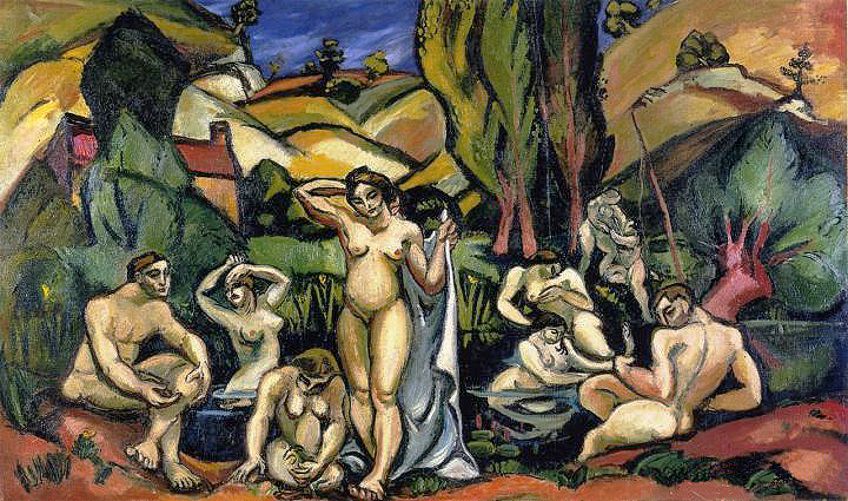
The Fauvist movement also took inspiration from the Symbolist emphasis on the internal and subjective vision of the artist. Adding to the melting pot that would become the Fauvist movement was the move by European art establishments to recognize African sculpture as an art form, rather than degrading them as mere artifacts of anthropological study.
European artists took new ideas of representation and form from African art, many of which, including solid and simple forms, would form the basis of Fauvist painting.
Henri Matisse and Color
There is a consensus among art historians that Matisse was the artist principally responsible for founding the Fauvist circle. There were several key ideas that Matisse brought to the birth of Fauvism, including the teachings of Moreau regarding the essentialism of personal expression, and the styles and techniques of Pointillism.
Although Matisse never applied the Pointillist theory pioneered by Henri-Edmond Cross, Paul Signac, and Georges Seurat, he was fascinated with how an artist could create a harmonious visual tone with tiny dots of varying colors of paint.
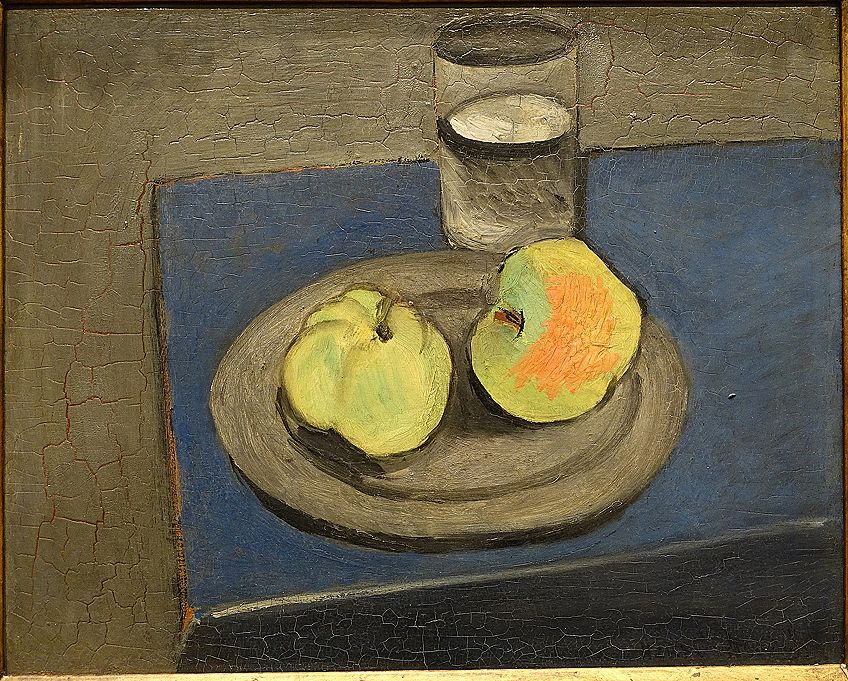
Although he never practiced Pointillism, Matisse’s observations of this technique led him to develop his own concept of color structure. The development of color structure was also greatly inspired by the integration of solid design and color in the paintings of Post-Impressionist artists like Édouard Vuillard, Pierre Bonnard, and Paul Gaugin. In a sense, color structure was the antagonist to Pointillism, wherein Matisse would use big and flat areas of a single color to deliberately establish a certain mood in his paintings.
Matisse drew all these varying ideas together to create the uniquely Fauvist use of color.
Moving away from the mixing and combining of subtle hues of color, Matisse and other Fauvist painters began communicating emotion with vibrant and undiluted paints, often directly from the tube. Since the middle of the 1890s, Matisse had been working outdoors and he developed an interest in conveying the varying effects of strong natural light, which was strengthened by his 1898 trips to the South of France and Corsica. Matisse grew these techniques by working alongside Cross and Signac in 1904.
The Impact of Paul Cézanne
Another important influence on the developing Fauvism movement was French painter Paul Cézanne, whose use of saturated colors had a great impact on the style of the movement. His artworks, along with those produced by Vincent van Gogh and Paul Gaugin, expressed such a heightened sense of urgency and incompleteness that they went on to critically sway Henri Matisse’s own art before the start of Fauvism.
Due to Cézanne’s great effect on the art world, many artists have stated that he is the all-encompassing “father” of art.
Born in France, Paul Cézanne is predominantly remembered for the important role he played in the post-Impressionism movement, having been said to have formed the bridge that successfully connected the late 19th century Impressionism with the early 20th century’s new artistic style. Despite being credited with paving the way for Modernism to develop, Cézanne only became greatly admired and respected towards the end of his life. His artworks were declined countless times by the Salon in Paris, with his paintings being mocked by critics when he first exhibited with the Impressionist group.

In 1906, the Salon des Indépendants occurred. This was the first time that all the Fauves exhibited their artworks together, with the centerpiece of the exhibition being Henri Matisse’s Le Bonheur de Vivre (1905 – 1906). However, critics responded harshly to this artwork, comparing it to the likes of Cézanne’s Bathers series (1898 – 1905), which was also not well received. Matisse’s apparent flatness, vibrant colors, diverse style, and varied technique related too much to Cézanne’s work; a painting that was not considered to be a worthy piece of art at all.
However, what those who ridiculed Paul Cézanne’s paintings failed to recognize was the pure genius behind his works. As the art world has continued to develop and evolve, Cézanne’s artworks are known to make up some of the most influential and important ties between major art movements, such as Impressionism and Fauvism.

In addition to having a lasting effect on the strong colors and painterly qualities of Fauvism, Cézanne’s transient Impressionist paintings have influenced the likes of Cubism, Expressionism, and even Abstraction.
When considering Cézanne’s artworks, the style of painting that he employed made his pieces clearly identifiable. Preferring to create surfaces of solid color that were applied with small brushstrokes, Cézanne went on to use repeating and expressive brushstrokes that added a heightened level of characterization to his canvases.
This allowed him to create complicated areas of color and brushstrokes, which helped to express the intensity of his various scenes and subject matters.
Growing the Fauvist Circle
While Matisse was experimenting with Post-Impressionist color techniques, Maurice de Vlaminck and André Derain met and began working closely with one another. These two painters began sharing a Parisian studio in 1901 and there they began to develop a shared interest in directional brushwork and bold colors. In 1899 Derain met Matisse, who he would later introduce to de Vlaminck.
Maurice de Vlaminck was significantly older and more established than the two young Fauves and he acted as a source of support and encouragement for their work and introduced them to prospective art dealers.

On a visit to the Parisian studio in 1905, Matisse witnessed the use of pure color in de Vlaminck’s work and was very impressed. In the same year, Derain was invited to join Matisse in a fishing and port town in Southern France called Collioure. Here, the two artists spent four months collaborating and refining their brushwork techniques and models of color use.
During this time, they both produced several notable paintings, many of which would be exhibited at that year’s annual Salon d’Automne.
The Salon d’Automne and the Birth of the Fauves
These three early Fauves each exhibited several Fauvism paintings at the 1905 exhibition in Paris. Several other former pupils of the great Moreau also exhibited at the Grand Palais, including Albert Marquet and Henri Manguin.
The Fauvism paintings exhibited by these artists were distinctive in the spontaneity of their brushwork and the vibrance of their saturated colors.
Albert Marquet also exhibited a more traditional sculptural bust which stood out among the vibrant paintings. Louis Vauxcelles described the scene as “Donatello among the wild beasts.” The term “wild beasts”, or “Fauves”, stuck with these artists.

Although this loosely connected group of artists faced significant hostility from art critics, many of them enjoyed substantial financial success following this 1905 exhibition. Over the following years, many of these artists exhibited at several other notable Salons, including the 1907 Salon des Indépendants. The Fauves became so well-known during this time, that a large room called the “Fauves’ Den” was the main attraction at this 1907 exhibition.
During these early years of the 20th century, several other artists began to join the original Fauves trio, including Raoul Dufy, Kees van Dongen, Georges Rouault, Georges Braque, and Othon Friesz. All of these artists were based in France and often shared studio spaces, traveled together, and exchanged ideas.
Critic Louis Vauxcelles
Another influential presence within the Fauvism movement was French art critic Louis Vauxcelles, who is credited with having come up with the term “Fauvism” for the movement! Additionally, he also coined the word “Cubism” to describe the analytical and avant-garde art movement that broke out at the beginning of the 20th century. Born in Paris in 1870, Vauxcelles became one of the most popular art critics in France by 1900.
Appearing regularly in a variety of publications, such as “Gil Blas” and “Excelsior”, Vauxcelles greatly disliked both the official Salon style, as well as abstract work. Due to this, he held a great opposition to Fauvism, believing that the art movement contained nothing of value.
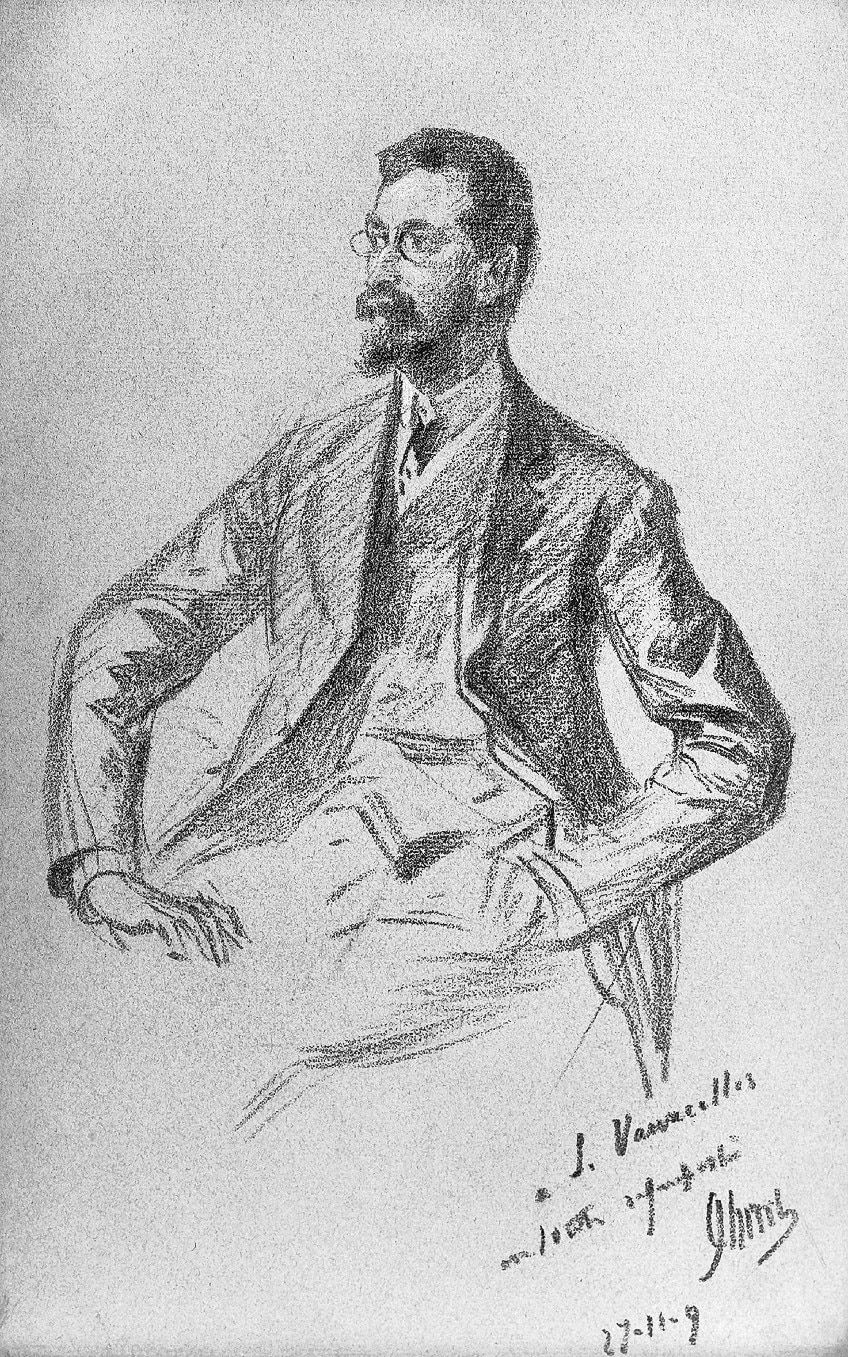
In 1905, he used the term “les fauves”, which translates to “wild beasts”, in his review of the Salon d’Automne exhibition. He described the artworks he saw derisively and critically, comparing them to the works of Henri Matisse, which he also disliked. Another reason for his hostility towards the Fauvist artworks was that they were displayed in the same room as a sculpture by Donatello, who he believed upheld the high standard of art.
“Le fauves” was used to describe the pure ugliness in the paintings that he saw, especially when compared to the perfection of Donatello’s work in the same space. Vauxcelles only praised the sculpture, calling it “a Donatello among the wild beasts”, and hence the term was born.
Despite providing the important movement with its distinguishing name, Vauxcelles believed that it was a dangerous style that held absolutely no appeal whatsoever, and harshly criticized the notable artists who were involved.
The Most Influential Fauves and Their Works
Now that you have a foundational understanding of the development of the Fauvist movement, and some of the key techniques and styles, we can take a closer look at some of the most influential Fauvist painters and their works. Art is a visual form, and there is no better way to understand a movement than to take it in through your eyes.
Henri Matisse (1869 – 1954)
| Date of Birth | 31 December 1869 |
| Date of Death | 3 November 1954 |
| Nationality | French |
| Art Movements | Fauvism, Modernism, and Post-Impressionism |
Henri Matisse first entered the French art scene as a Post-Impressionist painter, and he achieved notoriety as the leader of the Fauvist movement. When it comes to the Fauvist use of color, Matisse is certainly the pioneer. In fact, many regard him as the most significant colorist of the 20th century. In terms of the importance of Matisse’s developments in color, many posit him as a rival to the innovations of Pablo Picasso.
Although Matisse did show some interest in the Cubist movement, he immersed himself in his desire to use color as the basis for decorative, expressive, and monumental paintings.
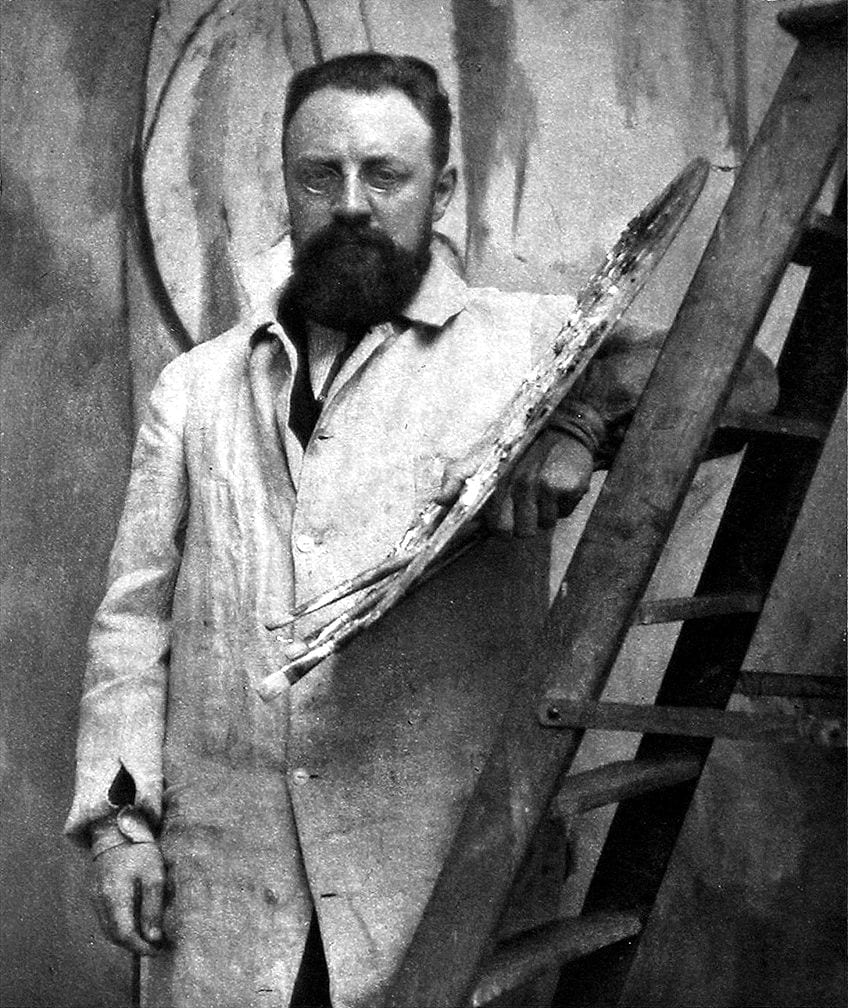
The Key Elements of Matisse’s Style
Henri Matisse has a very recognizable style within the Fauvist movement. In terms of his use of pure color, his desire for balance, his use of different cultural elements, and his choice of subject matter, Matisse stands alone as one of the most unique and celebrated artists of the 20th century.
The most well-known facet of Matisse’s Fauvist style is clearly his use of color.
As discussed previously, Matisse blended the use of color in Pointillism and Post-Impressionism to create a unique style. Rather than using a range of blended hues, Matisse preferred to combine the expanses of exposed canvas with areas of pure color, to create an atmosphere filled with light. In the place of shading or modeling to add dimension and depth to his works, Matisse juxtaposed areas of unmodulated and often contrasting color.
Matisse was influential in his endorsement of the value of decorative elements in 20th-century modern art, but he wanted his art to create a sense of balance and serenity. Matisse once said that he did not want his art to be depressing or troubling in any way, preferring to capture a sense of serenity, purity, and balance. This aspiration would prove to be influential for several other artists, including Clement Greenberg, who wanted art to provide a sense of shelter and protection from disorienting modern life. Despite this desire, Matisse often deliberately used unsettling combinations of pattern and color.
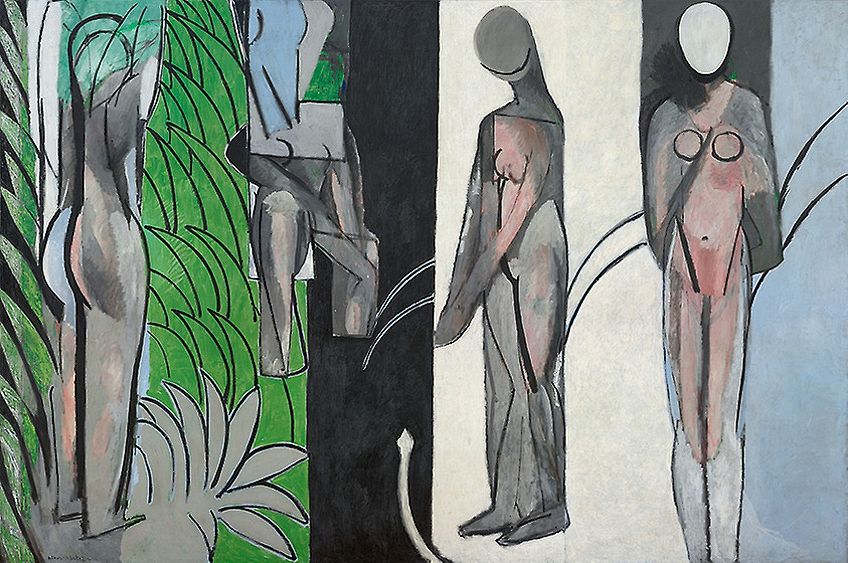
Henri Matisse incorporated a wide range of cultural influences in his Fauvist works. After traveling to North Africa and visiting several exhibitions of Asian art, Matisse began to incorporate various elements of these cultural art practices into his own paintings. In particular, Matisse gravitated toward the flat appearance of many Japanese prints, the angular shapes of African sculpture, and the decorative patterns of Islamic art forms. The result is the eclectic and unique style that is known and celebrated throughout the world.
When it comes to subject matter, Matisse specialized in nude portraiture and still life scenes, although he did dabble in other typically Fauvist subjects.
Matisse was not only a painter as he produced sculptures and many multimedia pieces. Many of his sculptural pieces celebrated the human figure, which he felt had been neglected by Impressionist artists. Sometimes Matisse’s figures would be imbued with the personality and mood of his models, and sometimes he would simply use their form as a vehicle for his own perceptions and emotions. These human figures could be curvilinear or harshly fragmented.
Luxe, Calme et Volupté (1904)
| Year | 1904 |
| Medium | Oil on canvas |
| Dimensions | 98.5 cm x 118.5 cm |
| Where It Is Currently Housed | Musée d’Orsay, Paris |
You can tell immediately by looking at this oil painting that it is an example of Matisse’s early work. Not only does it demonstrate his early stylistic influences, but it also hints at the development of his own style that was still to come. Matisse’s use of tiny dabs of color that create a visual quiver, hinting at Pointillism and Divisionism. He does not, however, merge these colors together in the traditions of these styles to create a harmonious tonality. Instead, Matisse keeps the areas of yellow, greens, blues, and reds in their own discrete areas of the canvas.
The effect that Matisse manages to create by merging his fascination with pure color with the techniques of Pointillism is one of heightened dizziness.
The separation of the colors increases the vibration of the dotted techniques. The name of this painting translates to “Luxury, Peace, and Pleasure.” Matisse appropriated this name from a line in L’Invitation au Voyage (1857), a poem by Charles Baudelaire. This painting is one of Matisse’s most celebrated as it hails in the Fauvist style.
Le Bonheur de Vivre (1905 – 1906)
| Year | 1905 – 1906 |
| Medium | Oil on canvas |
| Dimensions | 176.5 cm x 240.7 cm |
| Where It Is Currently Housed | Barnes Foundation, Philadelphia |
Out of all of his famed works, this painting titled The Joy of Life is perhaps the most famous Fauvist painting by Matisse. Compared to Luxe, Calme, et Volupté, this painting is a clear progression toward Matisse’s firm Fauvist style. Gone is the use of Pointillist techniques, but his use of pure blocked color remains.
In typical Fauvist style, it is not the subject matter that is revolutionary, but rather the way that it is presented.
The scene features a pastoral scene with various figures making merry. This is a traditional scene, but Matisse daringly uses blocks of non-natural colors to add structure. The nude figures in the scene are acting out various bliss-filled activities, including embracing, dancing, and music-making. A sinuous network of curved lines and Matisse’s use of the same colors for all of the compositional elements tie the figures to each other and the landscape.
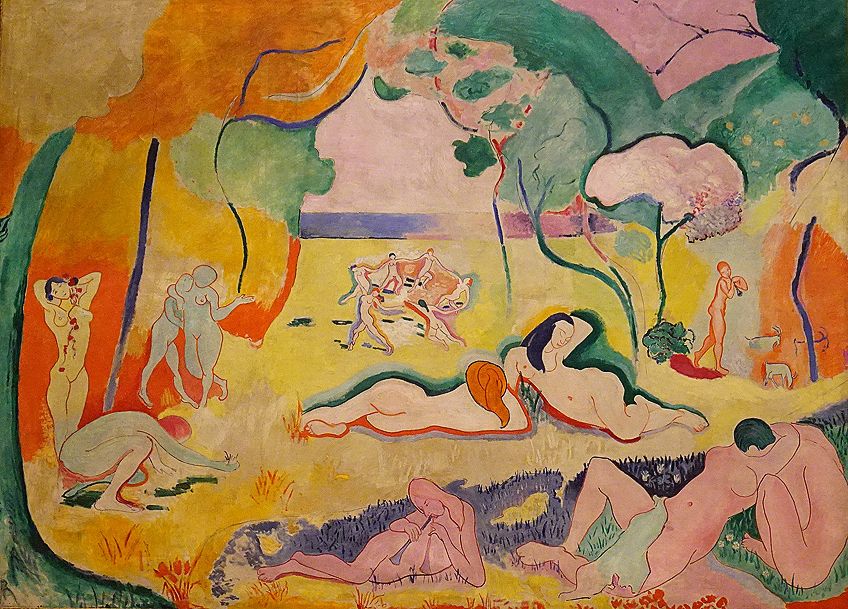
The way in which Matisse juxtaposes pairs of complementing colors replaces the traditional methods of creating depth and dimension, and produces such strong contrasts that the painting almost appears to vibrate when looking at it.
One of the reasons why this painting is so influential is the way in which it draws together visual styles and influences from multiple art movements from Art Nouveau to the Renaissance but in a thoroughly modern way.
La Danse (1910)
| Year | 1910 |
| Medium | Oil on canvas |
| Dimensions | 260 cm x 391 cm |
| Where It Is Currently Housed | The Hermitage, Saint Petersburg |
This painting represents the culmination of Matisse’s Fauvism and is one of his latest works in this style. Danse, also called “The Dance” was commissioned alongside another painting called Music by Sergei Shchukin, a Russian merchant and patron of Avant-Garde art. Another famed painting by Matisse, this canvas features nude figures engaged in a circular dance.
Once again, Matisse is re-imagining centuries-old compositional motifs in an entirely modern way. This particular motif often harkens back to a golden age of leisure and harmony.

Matisse simplifies and distorts the bodies of these nude figures, with their extremities brushing the edges of the canvas, as if the canvas was barely able to contain their dynamism. Not only is this portrayal of the figures new and intriguing, but Matisse also paints them in unnatural and vibrant colors. The figures are a solid shade and sit against the very flat background of green earth and blue sky.
Through his blocked use of pure colors and his playfulness with the figure’s anatomy, Matisse is able to emphasize the primordial elements of dance.
Charles Camoin (1879 – 1965)
| Date of Birth | 23 September 1879 |
| Date of Death | 20 May 1965 |
| Nationality | French |
| Art Movements | Fauvism |
Another French painter who was known for his involvement within the Fauvism movement was Charles Camoin. An expressionist landscape painter at first, Camoin met Henri Matisse during a class that was taught by Gustave Moreau, where Matisse introduced him to the style of Fauvism.
Along with Matisse and other artists including André Derain, Camoin helped to establish the original group of Fauvist artists.
Charles Camoin established a life-long friendship with Matisse, remaining close to him throughout the movement and even after it ended. One of his notable paintings is the Fauvist portrait that he made of Henri Matisse, which is housed in a permanent collection in the Pompidou Museum in Paris today.
La Port de Marseille (1904)
| Year | 1904 |
| Medium | Oil on canvas |
| Dimensions | 46.7 cm x 61 cm |
| Where It Is Currently Housed | Private collection |
After establishing a friendship with Henri Matisse, Camoin was convinced by his friend to return to his hometown of Marseille in order to paint the magnificent seascapes that were found along the coast. Between 1904 and 1906, Charles Camoin traveled along the southern coast of France accompanied by Albert Marquet and Henri Manguin, where the three would traipse through the local towns that had stunning views of Marseille, Antheor, and Saint Tropez.
What makes this painting so beautiful is that Camoin was able to capture a view only accessible to the local communities.
In other words, it was a view not frequently seen by others, making his artwork a rare work of a fleeting moment. Capturing a scene from the harbor, Camoin depicts ships docked through his use of muted blues and whites, with the old fort of Marseille in the background. His addition of red and yellow highlighted, scattered throughout the composition, helps to breathe some life into his work.
“La Port de Marseille” was painted in a series of four other works that Camoin completed during his trip.
André Derain (1880 – 1954)
| Date of Birth | 10 June 1880 |
| Date of Death | 8 September 1954 |
| Nationality | French |
| Art Movements | Fauvism |
Alongside Matisse, Derain is one of the most prominent Fauvist painters, and he played a significant role in developing not only the Fauvist movement, but his later associations with Pablo Picasso were integral to the Cubist movement. Despite his popularity, Derain sits at the center of a debate surrounding the originality of his work and his ideas. In his constant attempts to create art that is timeless and imbued with artistic meaning, he experimented greatly with a vast array of stylistic idioms.
Regardless of the debate, Derain’s talent as an artist and his contributions to Fauvism cannot be understated.
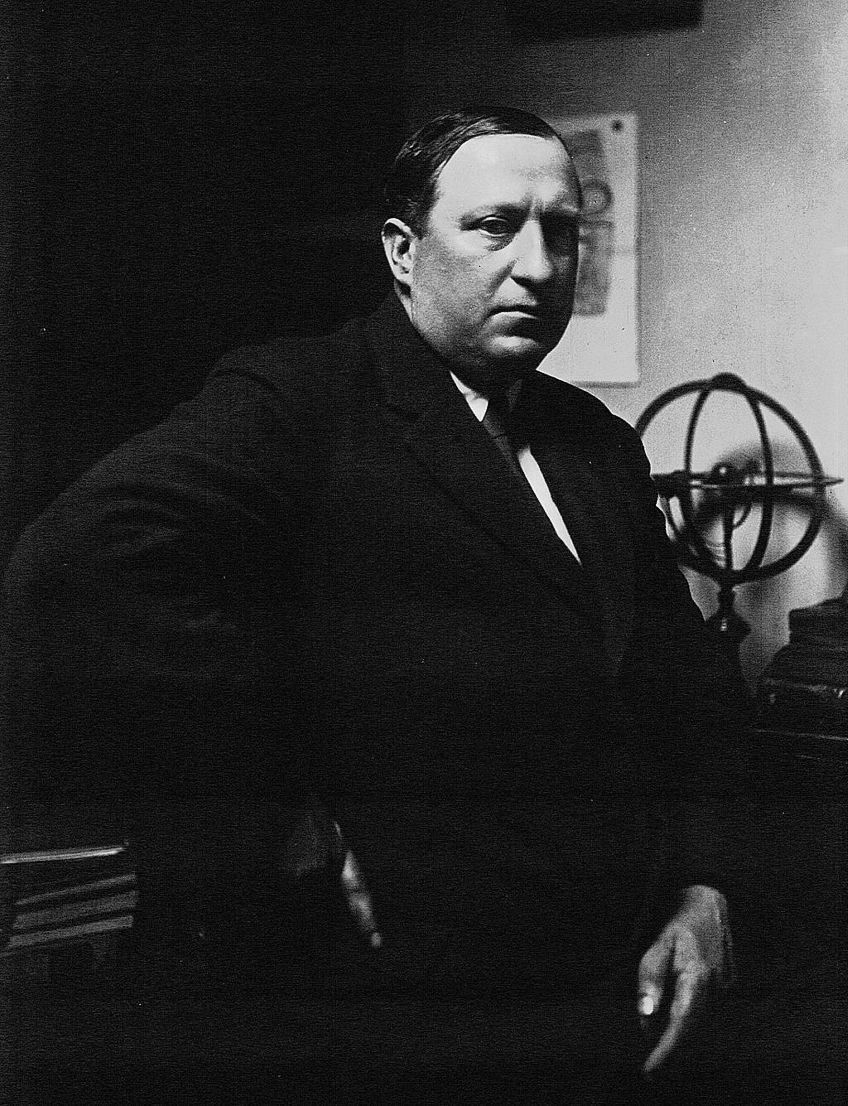
Key Elements of Derain’s Style
Like Matisse, Derain is known for his use of bold pure colors, his fascination with African art styles, and his use of simplified forms. Derain’s work can also be characterized by his search for an art style that did not require any context to give it value and his use of expressive brushwork.
While Matisse used a range of cultural references to develop his style, Derain focused primarily on primitive masks. He was one of the first artists to collect African tribal art, and many believe that his interest inspired Cubist painters like Braque and Picasso.
Although Derain was briefly interested in exploring Cubism in his own work, he quickly moved on to other styles.

It is possible to see many varied styles in Derain’s work throughout the years. While his interest in finding a mode of art that had inherent value, regardless of the context, aligned his ideas with many Symbolist artists, he also showed brief inclinations toward the idealism of more Classical art forms. In contrast to the Impressionist artists before him, Derain tended to focus not on the reality of the world before him, preferring to use color and brushwork to translate the inherent beauty onto the canvas.
One of the key features of Derain’s paintings is his use of expressive brushstrokes.
Although he found interesting subjects in the world around him, his focus always remained on communicating the qualities of his paint through interesting and vibrant brushstrokes. You can note the dense and sometimes frenzied brushwork in many of Derain’s most famous works.
Portrait of Henri Matisse (1905)
| Year | 1905 |
| Medium | Oil on canvas |
| Dimensions | 46 cm x 34.9 cm |
| Where It Is Currently Housed | Tate Modern, London |
During their shared summer in Collioure, Derain painted this portrait of Matisse. The two men spent the summer experimenting with their techniques side by side. This portrait is particularly striking, and like most of the portraiture in Fauvism, Derain was not aiming to provide a detailed likeness of Matisse. Instead, Derain wanted to capture his state of mind through fluid lines, pure color, and visible brushwork.
In fact, the fluid lines and visible one-stroke brushwork emphasize Derain’s use of pure color, highlighting the lack of blending and transition shades. Derain uses light turquoise and violet hues to capture the shadow on the right side of Matisse’s face.
The contours on the left side of his face are highlighted through juxtaposed strokes of red and pink against the primary yellow shade. The two eyes share a green hue, and the unnatural shades used throughout the rest of his face only serve to emphasize the strength and intensity of his gaze. Derain creates a sense of dimensionality in this portrait through his varied brushstrokes. The background is very flat painted with thin and vertical strokes that blend together.
In contrast, the face of Matisse stands out as a result of the impasto brushwork, in which the paint appears to be built up in layers.
Pinède à Cassis (1907)
| Year | 1907 |
| Medium | Oil on canvas |
| Dimensions | 54 cm x 65 cm |
| Where It Is Currently Housed | Le Musée Cantini, Marseille |
The vibrancy of Derain’s use of color is clear in this Fauvist landscape. Derain is famed for his claim that rather than using color to directly replicate the natural world, he uses it as a vessel for his internal emotional world. The colors in this painting are absolutely unnatural, with green-black tree trunks pushing out of the ground, which are made from various patches of red, orange, and yellow.
You can also see the vibrant dynamism of Derain’s brushstrokes.
He uses isolated and long brushstrokes to structure the ground and trees. Many believe that this brushwork technique was influenced by Divisionist artists. Together with the jarring color contrasts, this pulsing brushwork makes us feel the shaking heat of a Mediterranean summer. Not only this, but the flatness of the canvas maintains the focus of the viewer’s attention on the light effect and the ripples of movement throughout the composition.
Georges Braque (1882 – 1963)
| Date of Birth | 13 May 1882 |
| Date of Death | 31 August 1963 |
| Nationality | French |
| Art Movements | Cubism and Fauvism |
Although Georges Braque is perhaps more well-known as one of the founding members of the Cubist movement, he began as a member of the Fauves. It was only after he met Picasso that Braque began to work in a more Cubist style. Even then, Braque’s work differed significantly from that of Picasso and other Cubist painters.
While Picasso and others included iconological elements in their works, Braque preferred to concentrate purely on composition and space.
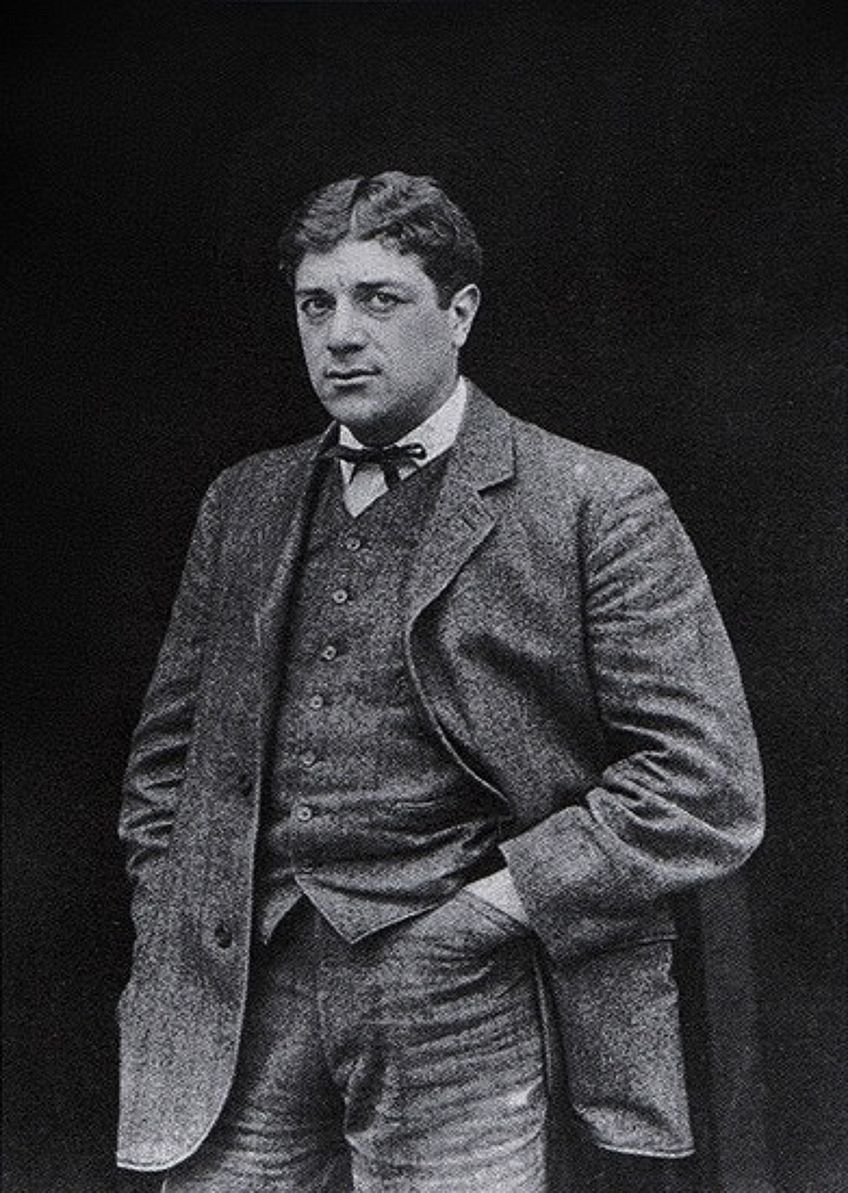
Key Elements of Braque’s Style
Braque’s art is varied in style and medium, but throughout his works, he sought to find compositional harmony and balance. His desire for balance is most clear in his paper collages, created with the papier collés technique that he developed with Picasso.
By taking this process one step further to include cut-out elements of advertisements in his compositions, Braque was laying the foundations for a number of 20th century modern art movements, including Pop Art and Constructivism.

Not only did Braque include novel media in his compositions, but he also had several other interesting and ground-breaking techniques. He would often apply stenciled letters to his paintings, use the grain of marble or wood to add texture and dimensions to his works, and add pigments to sand. Many of Braque’s paintings are so abstract that they teeter on the edge of collapsing into nothing more than patterns.
It is these patterns, however, that Braque sought because he believed that he could express the absolute essence of the objects without faithful representation.
Le Viaduc à l’Estaque (1908)
| Year | 1908 |
| Medium | Oil on canvas |
| Dimensions | 73 cm x 60 cm |
| Where It Is Currently Housed | Tel Aviv Museum of Art, Israel |
From 1905, Braque spent three years painting the landscapes of l’Estaque using a range of different color schemes. This painting in particular captures the transition from Fauvism to Cubism in the forms and colors that Braque uses.
Braque uses blocks of single colors that are not entirely true to nature, but he pairs these Fauvist colors with a decidedly Cubist approach to perspective and form.
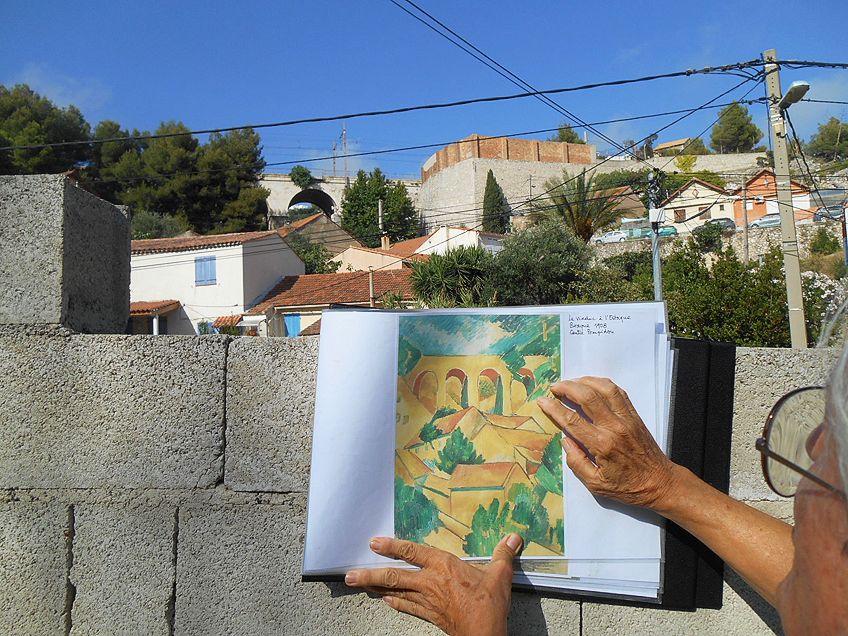
The rounded arches of the aqueduct tie one side of the composition to the other and suggest a particular perspective. The jumble of houses in the foreground invites us to consider another viewpoint of the scene.
The greenery has a frenzied appearance to it and lacks dimension, which adds to the confusion of perspective.
The End of Fauvism
The Fauvist movement was admittedly short-lived and the group never produced a manifesto that highlighted their shared stylistic aims. Despite their brief existence as a loosely joined group of artists, Matisse wrote Notes of a Painter in 1908, which served as a formal record of many of the Fauvist’s shared goals and ideas. By 1908, however, many Fauvist painters began moving in different artistic directions. Derain briefly entertained the Cubist style, while Braque joined Picasso to establish the next Modern art movement of the era.
Despite their short existence, the Fauvism artists made an incredibly significant impact on the trajectory of 20th-century modern art. Freeing themselves from the constraints of reality laid the groundwork for the Surrealists, their vibrant use of color and form transitioned into the Cubist style, and their use of new and innovative media opened the door for Pop artists.
Take a look at our Fauvism art webstory here!
Frequently Asked Questions
Is Fauvism the Same as Cubism?
What is Fauvism and how is it different to Cubism? Although these two movements happened in close temporal proximity to each other and share similar explorations of form and color, they are two distinct movements. Cubism did, however, grow out of the Fauvist movement with the help of artists like Derain and Braque.
What Are the Central Characteristics of Fauvism Art?
When discussing what defines Fauvist paintings, there are three key ideas. The first is their use of pure and vibrant colors that were not necessarily naturalistic to communicate the artist’s internal emotional world. The second was their focus on art as a vehicle for subjective expression, and the third is their use of simple forms and compositions. All Fauvism artists are united by these elements.
Isabella studied at the University of Cape Town in South Africa and graduated with a Bachelor of Arts majoring in English Literature & Language and Psychology. Throughout her undergraduate years, she took Art History as an additional subject and absolutely loved it. Building on from her art history knowledge that began in high school, art has always been a particular area of fascination for her. From learning about artworks previously unknown to her, or sharpening her existing understanding of specific works, the ability to continue learning within this interesting sphere excites her greatly.
Her focal points of interest in art history encompass profiling specific artists and art movements, as it is these areas where she is able to really dig deep into the rich narrative of the art world. Additionally, she particularly enjoys exploring the different artistic styles of the 20th century, as well as the important impact that female artists have had on the development of art history.
Learn more about Isabella Meyer and the Art in Context Team.
Cite this Article
Isabella, Meyer, “Fauvism – The Origins, Artworks, and Artists of the Fauve Movement.” Art in Context. June 18, 2021. URL: https://artincontext.org/fauvism/
Meyer, I. (2021, 18 June). Fauvism – The Origins, Artworks, and Artists of the Fauve Movement. Art in Context. https://artincontext.org/fauvism/
Meyer, Isabella. “Fauvism – The Origins, Artworks, and Artists of the Fauve Movement.” Art in Context, June 18, 2021. https://artincontext.org/fauvism/.


